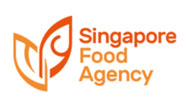
Singapore Food Agency
- Consultation Period:
- 27 Aug 2021 - 27 Oct 2021
- Status:
- Closed
Detailed Description
Aim
1. The Singapore Food Agency (SFA) is seeking feedback from the seafood industry on the adoption of the Codex maximum use level of 2.2 g/kg for phosphates (expressed as phosphorus) in frozen glazed fish. “Fish” is defined as “any edible and wholesome part of any marine or freshwater animal, other than a mammal, that is ordinarily used for human consumption, and shall include crustaceans and molluscs.” (Regulation 71, Food Regulations)
Background
2. Frozen fish is often glazed by dipping or spraying with drinking water, such that a layer of ice is formed on the surface of the fish. The purpose is to protect the fish from the effects of dehydration and oxidation during cold storage. Phosphates may be used as humectants as part of this glazing process.
3. In 2007, then-AVA issued a trade circular stating that the functional use of phosphates in the processing of frozen fish fillets was allowed, up to a maximum level of 10 g/kg, in accordance to the Codex Standard For Quick Frozen Blocks Of Fish Fillet, Minced Fish Flesh And Mixtures Of Fillets And Minced Fish Flesh (CODEX STAN 165-1989, Rev. 1 - 1995).
4. At that time, the Codex standards which were referenced allowed the use of phosphates, up to a maximum level of 10 g/kg, expressed as phosphorus pentoxide, P2O5. This maximum level also included levels of phosphates naturally present in the product.
5. The Codex Alimentarius Commission has since revised the maximum use level of phosphates in frozen fish products to 2.2 g/kg and expressing the maximum level as phosphorus instead of P2O5. The Codex maximum use level is applied to the food category “frozen fish, fish fillets, and fish products, including mollusks, crustaceans, and echinoderms”. In addition, Codex has specified that this revised maximum use level only applies to the ingoing amount of phosphates added to frozen fish and does not include naturally occurring phosphorous. Please refer to the table appended below:
6. However, the Codex maximum use level of 2.2 g/kg does not apply to frozen fish products conforming to the following Codex commodities standards where phosphates cannot be added (reference Codex General Standard for Food Additives (Revision 2019):
- products conforming to the Standard for Quick Frozen Raw Squid (CODEX STAN 191-1995).
- products conforming to the Standard for Live Abalone and for Raw Fresh Chilled or Frozen Abalone for Direct Consumption or for Further Processing (CODEX STAN 312-2013).
- products conforming to the Standard for Quick Frozen Finfish, Uneviscerated and Eviscerated (CODEX STAN 36-1981).
- products conforming to the Standard for Live and Raw Bivalve Molluscs (CODEX STAN 292-2008).
7. When revising the maximum use level, Codex took into consideration the estimated maximum tolerable daily intake of 70 mg/kg body weight for phosphoric acid and phosphate salts established in 1982 by the Joint FAO/WHO Expert Committee on Food Additives (JECFA) , as well as discussions on whether the use of phosphates at the specified levels were technologically justified for the intended function as a humectant.
Proposed amendment
8. SFA proposes to adopt the Codex standard for phosphates in “frozen fish, fish fillets, and fish products, including mollusks, crustaceans, and echinoderms”, as referenced in paragraph 5. The maximum use level of 2.2 g/kg (as phosphorus) for phosphates will be included in the Food Regulations in future. Similar to Codex, we will not allow the use of phosphates in the frozen fish products conforming to the four commodities standards, as listed in paragraph 6. Please refer to Annex 1 for the scope of frozen fish products where phosphates are not allowed to be used.
9. There is no change in the types of phosphates allowed, as only phosphates which are permitted as food additives under the Food Regulations can be used for glazing of fish.
Request for comments
10. SFA invites views and comments from the seafood industry on paragraph 8. Please submit your comments or feedback in the form of the table provided in Annex 2. All submissions should be clearly and concisely written and should provide a reasoned explanation for any proposed revisions.
11. Submissions should reach SFA no later than 6:00 p.m., 27 October 2021, through mail, or email, to the following addresses:
Mail:
Risk Management & Surveillance Department/ Joint Operations Division
Singapore Food Agency
52 Jurong Gateway Road #14-01
Singapore 608550
Fax: +(65) 6334 1831
(Attention: Ms Low Bee Leng)
Email:
LOW_BEE_LENG@SFA.GOV.SG

